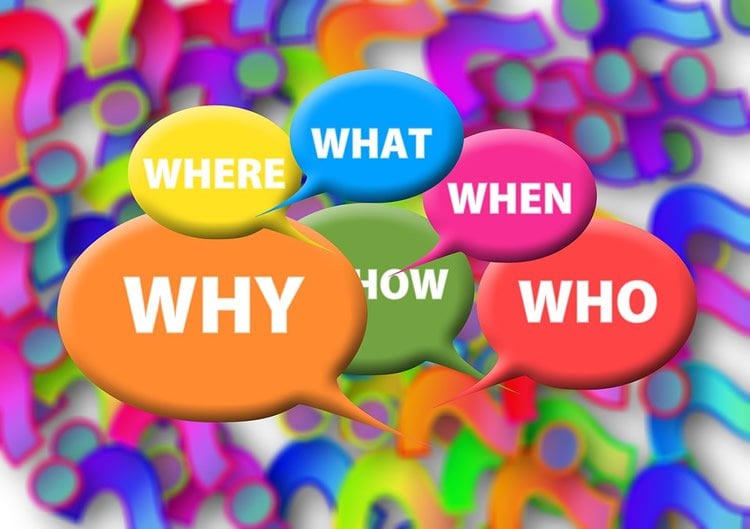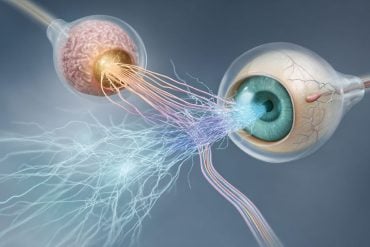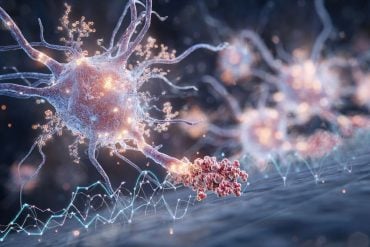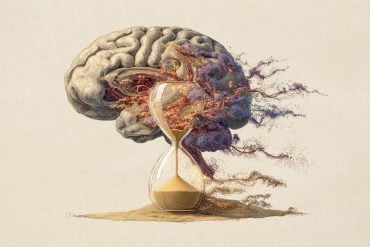Summary: Fundamental limitations on sensory and cognitive memory shape language acquisition and processing, a new study reports.
Source: Cornell University.
We are constantly bombarded with linguistic input, but our brains are unable to remember long strings of linguistic information. How does the brain make sense of this ongoing deluge of sound?
In a new paper in Behavioral and Brain Sciences, “The Now-or-Never Bottleneck: A Fundamental Constraint on Language,” Cornell psychology professor Morten Christiansen and Nick Chater (University of Warwick, U.K.) argue that language processing, acquisition and evolution, as well as the structure of language itself, are all profoundly shaped by what they call the “now-or-never bottleneck”: fundamental limitations on sensory and cognitive memory. They propose the brain’s language processing system overcomes this bottleneck by processing linguistic input immediately, before it is obliterated by later input and lost forever.
The brain does this, say the authors, by incrementally “chunking” linguistic material into a hierarchy of increasingly abstract representational formats, from phonemes to syllables, to words, phrases and beyond. And when we speak, the sequence of chunking operations is reversed.
“Our argument has fundamental theoretical implications for many disciplines, because it requires a radical shift in explanatory focus when approaching language,” says Christiansen.
The now-or-never bottleneck is not specific to language, Christiansen and Chater write, but arises from general principles of perceptuo-motor processing and memory. Studies show much acoustic information is lost after just 50 milliseconds, with the auditory trace all but gone after 100 milliseconds. Similarly, and of relevance for sign language, we can only retain visual information for about 60 to 70 milliseconds. Unless the perceived information is processed, it will be overwritten quickly or interfered with by new incoming information.
The now-or-never bottleneck has powerful implications for language acquisition, because learning how to process language can only take place “in the moment”: If linguistic input is not chunked right away, it will be lost and cannot form the basis of subsequent learning. This means, says Christiansen, language acquisition is essentially about learning to process.
“The now-or-never bottleneck requires that language acquisition be viewed as a type of skill learning, such as learning to drive, juggle, play the violin or play chess … The challenge of language acquisition is to learn a dazzling sequence of rapid processing operations, rather than conjecturing a correct ‘linguistic theory,’” write the authors.

They explain such learning is inherently local, because information is only available for a limited window of time. This forces the language system to deploy all available information predictively across multiple levels of representation to ensure local linguistic ambiguities are dealt with correctly the first time. Once the original input is lost, there is no way for the language system to recover. They call this “chunk-and-pass” processing.
In this system, they write, “grammatical structure is fundamentally the history of language processing operations within the individual speaker/hearer.”
Christiansen and Chater posit myriad local short-term processes of language compound to result in long-term language evolution. “If aspects of language survive only when they are easy to produce and understand, then moment-by-moment processing will shape not only the structure of language but also the learning problem that the child faces,” they write. “Thus, from the perspective of language as an evolving system, language processing at the timescale of seconds has implications for the longer timescales of language acquisition and evolution.”
Source: Cornell University
Image Source: This NeuroscienceNews.com image is in the public domain.
Original Research: Abstract for “The Now-or-Never Bottleneck: A Fundamental Constraint on Language” by Morten H. Christiansen and Nick Chater in Behavioral and Brain Sciences. Published online April 13 2016 doi:10.1017/S0140525X1500031X
[cbtabs][cbtab title=”MLA”]Cornell University. “”Now or Never Bottleneck” Explains Language Acquisition.” NeuroscienceNews. NeuroscienceNews, 11 June 2016.
<https://neurosciencenews.com/language-acquisition-bottleneck-4442/>.[/cbtab][cbtab title=”APA”]Cornell University. (2016, June 11). “Now or Never Bottleneck” Explains Language Acquisition. NeuroscienceNews. Retrieved June 11, 2016 from https://neurosciencenews.com/language-acquisition-bottleneck-4442/[/cbtab][cbtab title=”Chicago”]Cornell University. “”Now or Never Bottleneck” Explains Language Acquisition.” https://neurosciencenews.com/language-acquisition-bottleneck-4442/ (accessed June 11, 2016).[/cbtab][/cbtabs]
Abstract
The Now-or-Never Bottleneck: A Fundamental Constraint on Language
Memory is fleeting. New material rapidly obliterates previous material. How, then, can the brain deal successfully with the continual deluge of linguistic input? We argue that, to deal with this “Now-or-Never” bottleneck, the brain must compress and recode linguistic input as rapidly as possible. This observation has strong implications for the nature of language processing: (1) the language system must “eagerly” recode and compress linguistic input; (2) as the bottleneck recurs at each new representational level, the language system must build a multilevel linguistic representation; and (3) the language system must deploy all available information predictively to ensure that local linguistic ambiguities are dealt with “Right-First-Time”; once the original input is lost, there is no way for the language system to recover. This is “Chunk-and-Pass” processing. Similarly, language learning must also occur in the here and now, which implies that language acquisition is learning to process, rather than inducing, a grammar. Moreover, this perspective provides a cognitive foundation for grammaticalization and other aspects of language change. Chunk-and-Pass processing also helps explain a variety of core properties of language, including its multilevel representational structure and duality of patterning. This approach promises to create a direct relationship between psycholinguistics and linguistic theory. More generally, we outline a framework within which to integrate often disconnected inquiries into language processing, language acquisition, and language change and evolution.
“The Now-or-Never Bottleneck: A Fundamental Constraint on Language” by Morten H. Christiansen and Nick Chater in Behavioral and Brain Sciences. Published online April 13 2016 doi:10.1017/S0140525X1500031X






